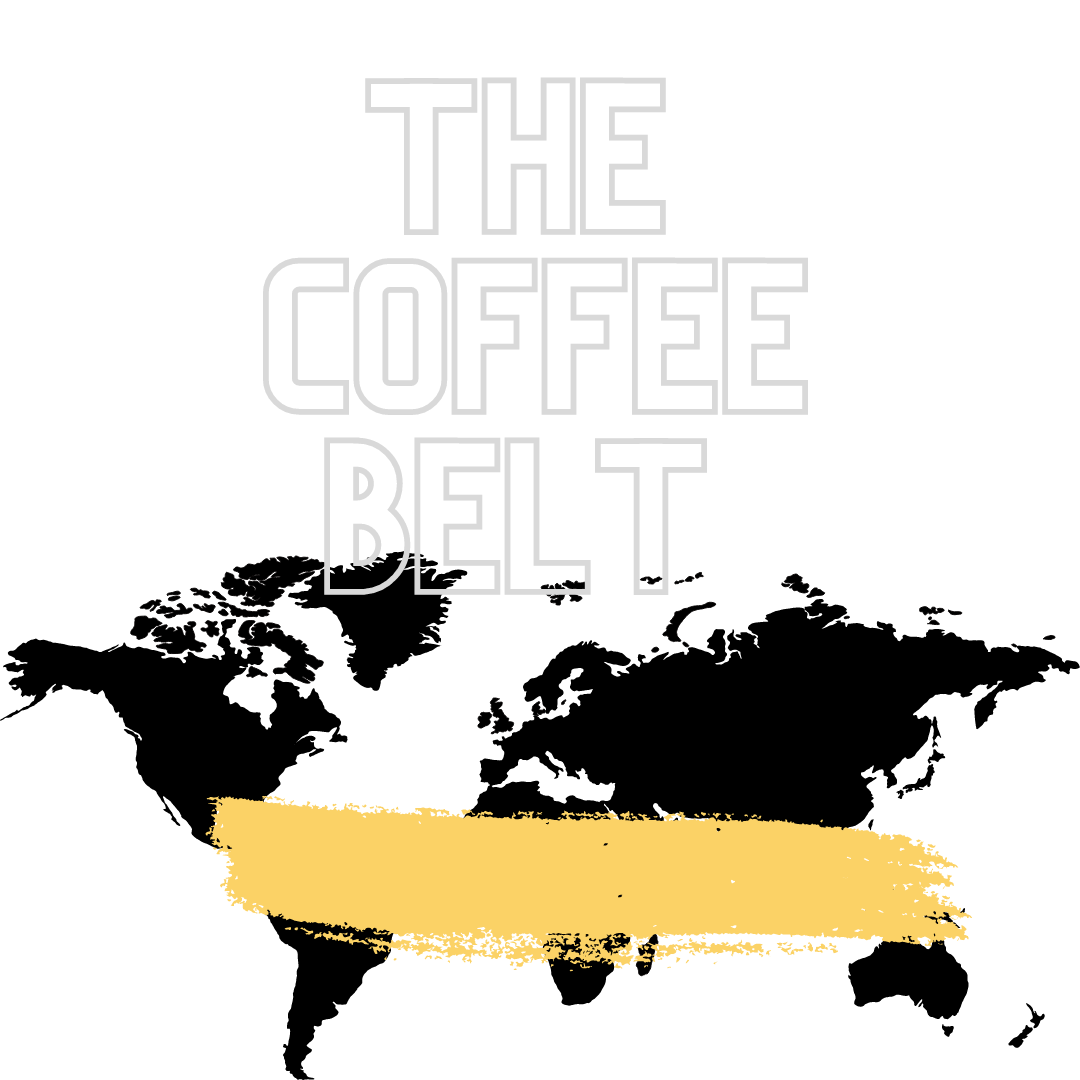Exploring the Coffee Belt: Where the Magic of Coffee Bean Thrives

The coffee belt is the greatest accessory the earth has ever given us. Lying between the Tropics of Cancer and Capricorn, the coffee belt passes through 70 different countries, all of which have tropical climates that provide the environment that provides the world with its coffee.
Coffee has a very specific set of variables that it needs to survive and thrive. It needs rich soil, a distinct wet and dry season, mild temperatures (roughly 60-80 degrees Fahrenheit), and elevation. There are exceptions to the elevation, like in Brazil, but even in that case it is usually not at sea level. Growing outside of the zone is so far only practical on a hobby level skill. It would take a pretty intriguing grow house to build large scale crops outside the belt.
Rainfall amounts need to be in the 60-80 inch range plus a period of two to three months of dry season. This is especially needed for harvest and allows for the cherries to be picked at their most ripest.
Sunlight is both beneficial and detrimental. Of course the plants need sunlight but you can get the best out of the plants when they are shade grown. This mimics the growth in the rain forests. You get more pollinators, more pest eating birds, better water filtration, and decreased soil erosion among other benefits. Shade grown is of course more labor intensive, as you are not only dealing with the coffee plants, but it produces a superior flavor. It is also highly coveted in specialty coffee circles.
The two main types are Arabica and Robusta. Arabica is usually grown at higher altitudes and prefers the shade more. Arabica coffee is not as hardy as Robusta varieties. They need a more stable set of conditions to really thrive. It is also why they are more expensive to produce. Robusta can be grown down to sea level and does well in full sun conditions.
As far as soil goes, terroir as it’s known, is what gives the individual coffees their taste. The soil brings out certain characteristics in different ways. That’s why each lot of coffee grown on different soil has a unique flavor.
There is no necessarily good or bad terroir, just that there are different soils. Of course you need nutrient dense soils to produce good crops. Volcanic soil being some of the best for growing and anything rich in magnesium, phosphorus, potassium, calcium, and zinc. Add in good air spores and organic material mixed in and you have yourself a solid foundation for growing an excellent crop.
But what are the countries that create coffee? Well there are fifty three of them, some producing tones and some barely sending out any. And here’s where they are:

As you can see from the photo there is a reason why they call it the coffee belt. One big belt across earth. The top ten of which are:
- Guatemala ~204,000 metric tons
- Mexico ~234,000 metric tons
- Uganda ~288,000 metric tons
- India ~348,000 metric tons
- Honduras ~348,000 metric tons
- Ethiopia ~384,000 metric tons
- Indonesia ~660,000 metric tons
- Colombia ~810,000 metric tons
- Vietnam ~1,650,000 metric tons
- Brazil ~2,595,000 metric tons
The coffee belt is so important because it’s where the four forces of temperature, humidity, water and elevation come into a perfect alignment to grow the most widely consumed beverage in the world.


Leave a comment